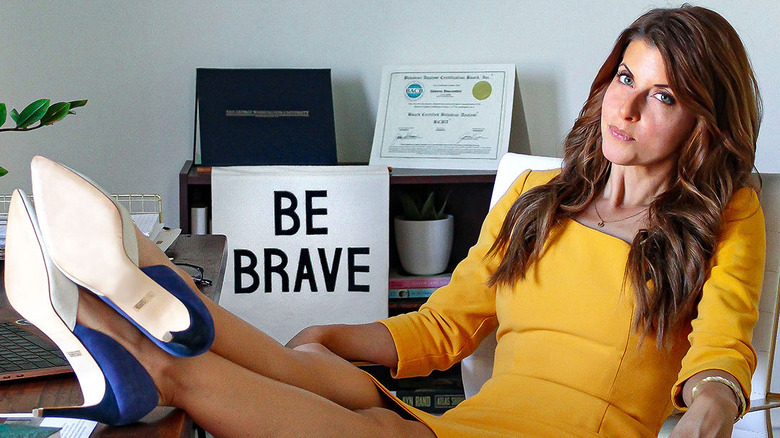Gianna Biscontini, a behavior analyst and the founder of W3RKWELL, used to be just as burnt out as the rest of us. Even though she had a good job that paid her well, she was still miserable. So, she decided to find out why, using her expertise in human behavior.
Biscontini realized her values and boundaries weren’t respected by her employer, which left her feeling undervalued and unmotivated to perform at her best. At the end of the day, she was burnt out. Thus, Biscontini became fascinated with burnout and how it can be addressed. She came up with the idea of using analytics to quantify it, define company wellness goals, and measure their success. Thereafter, W3RKWELL, a workplace wellness consulting firm, was born. Since then, she’s helped companies all over the country implement wellness programs.
In an exclusive interview with Health Digest, Biscontini explained how workplace burnout can be identified, how leadership can address it, and how employees can empower themselves by making important changes to avoid it.
Burnout in the workplace

Biscontini revealed that workplace burnout shows up in three ways – physical exhaustion, a decline in performance, and cynicism, which she described as the belief that “nobody’s happy and things are not going to change.” Biscontini knows that leadership needs to implement meaningful change ASAP when she sees employees showing these signs.
“The cynicism, I always start there because I say, ‘Look, it’s free to just care,'” Biscontini explained. “It’s free to gather your employees and be transparent and to say, ‘Here’s where we’re making mistakes… How can we make this place better for you?’ Learning to listen and care about your employees is free. And it takes that giant piece of cynicism away.”
However, to truly address cynicism, leadership needs to then make culture changes that align with what employees need. Biscontini has found that a flexible schedule is the most effective change that helps prevent burnout. Letting employees work how they want and when they want, gives them the tools they need to address their physical exhaustion, which leads to better performance. And flexibility shows employees that they’re valued, which helps eradicate cynicism.
What employees can do to avoid burnout

Addressing workplace burnout isn’t just on leadership, though. Employees need to take responsibility and make changes as well. According to Biscontini, the more effective way employees can prevent burnout is by setting clear boundaries.
“When you are exhausted and struggling and you don’t feel equipped to do the job that you’re hired to do, and you have questions and you are depressed, anxious, struggling, sleep deprived in any way, but you say, ‘Yeah, but I’m just going to keep doing it this way,’ you send an unconscious message that this is all okay with you,” Biscontini explained.
She went on to say that employees need to put aside their people-pleasing tendencies and be honest with leadership about what they need. Though this can be uncomfortable, nothing can change until everyone has clear expectations.
Biscontini acknowledged that setting boundaries in the workplace also comes with the tough realization that leadership may not respect your boundaries. If they don’t, it’s time to decide whether or not the job is worth the burnout. Biscontini stressed that if an employer’s actions show that they won’t respect your boundaries even when they’re reasonable, you may want to consider finding a new job. Your physical and mental health may not be worth the sacrifice.
For more information on Gianna Biscontini’s forthcoming book, “F**kless: The Guide to Wild, Unencumbered Freedom,” please visit https://giannabiscontini.com/book.




